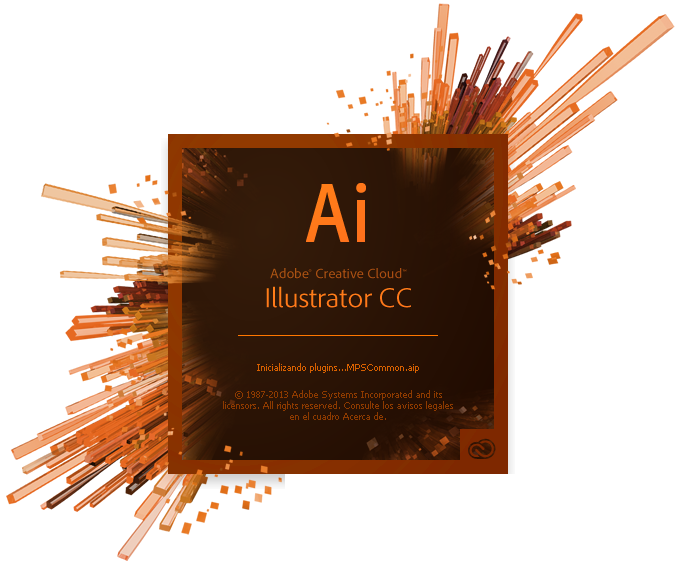What Is Adobe Illustrator?
Adobe Illustrator Is A Professional Vector Graphics Editor Developed And Marketed By Adobe Inc. It Is Widely Used By Graphic Designers, Illustrators, And Artists To Create Scalable Vector Artwork For A Variety Of Media, Including Print, Web, And Digital Platforms. Here Are Some Of The Key Features And Aspects Of Adobe Illustrator:

Vector Graphics: Unlike Raster Graphics, Which Are Made Up Of Pixels, Vector Graphics Are Created Using Paths Defined By Mathematical Equations. This Means They Can Be Scaled Infinitely Without Losing Quality, Making Them Ideal For Logos, Icons, And Other Graphics That Need To Be Resized Frequently.
Tools And Features: Illustrator Offers A Wide Range Of Tools And Features, Including The Pen Tool For Creating Precise Paths, The Shape Tool For Creating Basic Geometric Shapes, And The Type Tool For Adding And Styling Text. It Also Supports Advanced Features Such As Gradients, Blending Modes, And 3d Effects.
Artboards: Users Can Create Multiple Artboards In A Single Document, Allowing Them To Work On Different Parts Of A Project At The Same Time. This Is Particularly Useful For Designing Different Layouts, Such As Business Cards, Posters, And Web Graphics.
Integration With Adobe Creative Cloud: Illustrator Is Part Of Adobe’s Creative Cloud Suite, Which Means It Integrates Seamlessly With Other Adobe Products Such As Photoshop, Indesign, And After Effects. This Allows For A Smooth Workflow Across Different Media And Projects.
Plugins And Extensions: Users Can Extend Illustrator’s Capabilities With Plugins And Extensions, Which Add New Tools, Effects, And Functionalities To The Software.
Industry Standard: Illustrator Is Considered An Industry-Standard Tool For Vector Graphic Design. It Is Widely Used In Fields Such As Branding, Logo Design, Typography, Illustration, And Web Design.
Learning Resources: Adobe Provides A Wealth Of Tutorials, Guides, And Community Forums To Help Users Learn How To Use Illustrator Effectively, Whether They Are Beginners Or Advanced Users.
Overall, Adobe Illustrator Is A Powerful And Versatile Tool That Enables Creative Professionals To Produce High-Quality Vector Graphics For A Wide Range Of Applications
History Of Adobe Illustrator
Adobe Illustrator, A Vector Graphics Editor, Is One Of Adobe Systems’ Flagship Products. Its Development And Evolution Are Important Milestones In Graphic Design And Digital Art. Here Is A Detailed History Of Adobe Illustrator:
1. Early Beginnings: 1980s
1985: Adobe Systems Incorporated, Founded By John Warnock And Charles Geschke, Began Working On Illustrator. The Inspiration Came From The Need To Support Postscript, The Page Description Language Created By Adobe, In Handling Vector Graphics.
1987: Adobe Illustrator 1.0 Was Released For The Apple Macintosh. It Introduced The World To Powerful Vector Graphics Tools And Was Marketed Primarily To Designers In The Typesetting And Graphic Design Industries. Illustrator 88, Released The Same Year, Added Tools Such As Path Editing, Pen Tool, Shape Tool, And More.
2. Expansion And Refinement: 1990s
1990: Adobe Releases Illustrator 3.0 For The Macintosh. Significant Improvements Were Made In This Version, Including More Sophisticated Drawing Tools And The Introduction Of A Preview Mode.
1993: Illustrator 5.0 Was Released, Adding New Features Such As Path Alignment, Color Adjustments, And Blending Tools. This Version Was Also The First To Be Released For Windows, Which Expanded Its User Base.
1996: Illustrator 6.0 Added New Tools And Improved The User Interface, Focusing On A More Streamlined And Efficient Workflow For Designers.
3. Integration And Innovation: 2000s
2000: Adobe Illustrator 9.0 Introduced Transparency And The Ability To Save Files As Pdfs, Allowing For Better Integration With Other Adobe Products And Workflows.
2003: Illustrator Cs (Creative Suite), Version 11, Was Released. This Marked The Beginning Of Illustrator’s Integration Into The Adobe Creative Suite, Which Included Photoshop, Indesign, And Other Adobe Products. 3d Effects Tools Were Introduced In This Version.
2005: Illustrator Cs2, Version 12, Included New Features Such As Live Trace (For Converting Bitmap Images Into Vector Paths) And Live Paint (For More Intuitive Coloring And Painting Of Vector Objects).
4. Creative Cloud Era: 2010
2013: Adobe Moved To A Subscription-Based Model With The Introduction Of Adobe Creative Cloud (Cc). Illustrator Cc Included Performance Improvements, The Addition Of A Touch Type Tool, And Better Integration With Other Adobe Apps And Services.
2014-2019: Regular Updates Were Rolled Out Through Creative Cloud Subscriptions, Adding Features Such As Creative Cloud Libraries, Improved Gpu Performance, Touch Workspaces, And More Sophisticated Tools For Web And Mobile Design.
5. Present And Future: 2020
2020: Adobe Illustrator For Ipad Was Released, Providing A Powerful Vector Graphics Toolset For Mobile Devices. This Marked Adobe’s Commitment To Providing Designers With Versatile Tools On The Go.
2021 And Beyond: Adobe Continues To Innovate With Regular Updates, Focusing On Artificial Intelligence (Ai) And Machine Learning (Ml) To Enhance Design Capabilities. Features Such As Adobe Sensei Are Being Integrated To Provide Intelligent Editing And Design Suggestions.
Key Contributions And Impact
Vector Graphics: Illustrator Revolutionized Vector Graphics, Providing Precision And Scalability That Bitmap Images Could Not Achieve.
Industry Standard: Over The Years, Illustrator Has Become The Industry Standard For Vector Graphic Design, Used By Professionals In A Variety Of Fields Including Graphic Design, Web Design, Digital Art, And Print Media.
Integration With Adobe Suite: Seamless Integration With Other Adobe Products Has Made Illustrator A Vital Part Of The Design Workflow For Creative Professionals.
Pedagogical Influence: Illustrator Is Widely Taught In Design Schools And Courses, Ensuring That Future Generations Of Designers Are Proficient In Its Use
Core Features And Tools
Key Features
Natural Language Understanding (Nlu):
Context Awareness: Understanding And Maintaining The Context Of Conversations, Ensuring Consistent And Relevant Responses.
Sentiment Analysis: Recognizing And Reacting To The Emotional Tone Of Inputs, Providing Empathetic And Appropriate Responses.
Knowledge Management:
Knowledge Base: Accesses And Retrieves Information From A Vast Database Of Common Knowledge.
Learning Capabilities: Continuously Learns From Conversations To Improve Future Responses And Adapt To User Preferences.
Multimodal Interaction:
Text And Voice Input: Able To Understand And Respond To Both Written And Spoken Language.
Image Recognition: Analyzes And Interprets Visual Input Such As Images To Provide Relevant Information According To The Context.
Personalization:
User Profile: Maintains Individual User Profile To Tailor Responses Based On Past Interactions And Preferences.
Adaptive Learning: Adjusts Its Behavior And Recommendations Based On User Feedback And Changing Preferences.
Integration And Compatibility:
Api Integration: Easily Integrates With Various Applications And Platforms Via Apis.
Cross-Platform Support: Works Seamlessly Across Various Devices And Operating Systems.
Tools
Chat Interface:
User-Friendly Interface: Provides An Intuitive And Easy-To-Use Interface To Engage With Ai.
Multi-Language Support: Communicates In Multiple Languages, Making It Accessible To A Global Audience.
Analytics Dashboard:
Usage Metrics: Tracks And Displays Metrics Such As Interaction Counts, User Engagement, And Performance.
Sentiment Trends: Monitors And Reports On Sentiment Trends Over Time To Measure User Satisfaction And Experience.
Content Management System (Cms):
Knowledge Base Management: Allows Administrators To Update And Manage Information Used By The Ai.
Customization Options: Provides Tools To Customize Responses, Add New Information, And Modify Existing Content.
Security And Compliance:
Data Encryption: Ensures All User Data And Interactions Are Encrypted For Privacy And Security.
Compliance Standards: Adheres To Industry Standards And Regulations Such As Gdpr To Protect User Data.
Development Toolkits:
Sdks And Libraries: Provides Software Development Kits And Libraries For Developers To Build Custom Applications.
Documentation And Support: Provides Extensive Documentation And Support Resources For Developers And Users.
These Features And Tools Make Depth A Versatile And Powerful Platform For Natural Language Processing, User Interactions, And Knowledge Management, Catering To A Wide Range Of Applications And Industries.
Advanced Capabilities
Advanced Capabilities In Adobe Illustrator Include A Variety Of Tools And Features That Allow For Sophisticated And Precise Design Work.
Here Are Some Of The Key Advanced Features:
Pen Tool Mastery:
Bezier Curves: Create Smooth, Scalable Curves With Precision Using Anchor Points And Handles.
Path Adjustment: Refine Paths By Using The Direct Selection Tool To Adjust Individual Anchor Points And Segments.
Advanced Typography:
Type On Path: Align Text To The Edge Of A Shape Or Path For Dynamic Text Effects.
Opentype Features: Use Advanced Typographic Controls Such As Ligatures, Alternate Characters, And Stylistic Sets.
Gradient Mesh:
Complex Shading: Create Realistic Shading And Complex Color Transitions By Manipulating Mesh Points And Handles.
Blending Modes And Transparency:
Layer Blending: Use Blending Modes To Create Complex Visual Effects By Combining Multiple Objects And Layers.
Opacity Masks: Control Object Visibility With Complex Transparency Effects.
Pattern Creation:
Seamless Patterns: Design And Define Repeating Patterns That Can Be Applied To Shapes And Backgrounds.
Pattern Editing: Modify Existing Patterns With Precision Using The Pattern Edit Mode.
3d Effects:
Extrude And Bevel: Create 3d Objects From 2d Shapes, Adjusting Depth And Perspective.
Twist And Rotate: Create 3d Objects By Moving Or Rotating Shapes Around An Axis.
Appearance Panel:
Multiple Strokes And Fills: Apply And Manage Multiple Strokes And Fills To The Same Object For Complex Designs.
Effect Stacking: Combine Different Effects (Such As Drop Shadows, Glows, And Distortions) Into A Single Object.
Symbols And Symbolism Tools:
Dynamic Symbols: Create Reusable Graphics That Can Be Edited Simultaneously Throughout The Document.
Symbol Sprayer Tool: Distribute And Manipulate Instances Of Symbols For Complex Patterns And Textures.
Live Paint And Live Trace:
Live Paint: Easily Color In Complex, Overlapping Shapes Without Worrying About Lag.
Live Trace: Convert Raster Images To Vector Artwork With Customizable Tracing Options.
Artboards And Workspaces:
Multiple Artboards: Work On Multiple Designs In The Same Document, Each With Its Own Size And Settings.
Custom Workspaces: Save And Switch Between Custom Tools And Panel Layouts To Streamline Your Workflow.
Scripting And Automation:
Scripts: Use Javascript, Applescript, Or Visual Basic Script To Automate Repetitive Tasks And Create Custom Tools.
Actions: Record And Replay Sequences Of Commands To Automate Complex Processes.
Asset Export And Optimization:
Export For Screens: Easily Export Assets In Different Formats And Resolutions For Different Screens And Devices.
Svg Optimization: Fine-Tune Svg Export Settings For Web And App Design, Ensuring Optimal Performance And File Size.
By Mastering These Advanced Capabilities, Designers Can Leverage The Full Power Of Adobe Illustrator To Create Professional And Complex Vector Artwork

Workflow And Integration
Workflow And Integration In Adobe Illustrator
Adobe Illustrator Is A Powerful Vector Graphics Editor That Designers Use To Create Logos, Icons, Drawings, Typography, And Complex Illustrations. Understanding The Workflow And How Illustrator Is Integrated With Other Tools Can Greatly Enhance Productivity And Creativity.
1. Setup And Workspace Configuration
Create A New Document: Begin By Selecting The Appropriate Document Profile (E.G., Print, Web, Mobile) That Sets The Canvas Size, Color Mode, And Resolution.
Workspace Customization: Illustrator Offers Different Workspaces Such As Essentials, Layout, And Painting. Customize Your Workspace By Arranging Panels, Tools, And Windows To Fit Your Workflow.
2. Creating And Managing Shapes
Basic Shapes: Use Tools Such As Rectangle, Ellipse, And Polygon To Create Basic Shapes.
Pen Tool: Essential For Creating Complex Paths And Shapes. Mastering The Pen Tool Is The Key To Creating Precise Vector Graphics.
Shape Builder Tool: Easily Combine, Subtract, And Merge Shapes To Create Complex Designs.
3. Using Layers
Organize Artwork: Layers Help Manage Different Elements Of Your Design. You Can Lock, Hide, And Group Layers For Better Control.
Layer Styles: Apply Styles Like Transparency, Blending Modes, And Effects To Different Layers To Enhance Your Artwork.
4. Color And Gradients
Swatch Panel: Create And Save Custom Color Swatches For Consistency Across Your Design.
Gradient Tool: Apply Linear, Radial, And Freeform Gradients To Add Depth And Dimension.
Color Guide: Use The Color Guide Panel For Harmony Rules And Color Suggestions.
5. Typography
Text Tool: Add And Style Text With Different Fonts And Typefaces.
Character And Paragraph Panel: Control Typographic Properties Like Kerning, Leading, Alignment, And Spacing.
Text On A Path: Create Text That Follows A Path Or Shape For A Dynamic Design.
6. Effects And Styles
Appearance Panel: Apply Multiple Effects To The Same Object, Such As Shadows, Glows, And Distortions.
Graphic Styles: Save And Reuse Styles For Consistency And Efficiency.
7. Symbols And Patterns
Symbols: Create Reusable Elements To Maintain Consistency And Reduce File Size.
Pattern Creation: Design Seamless Patterns For Backgrounds, Textures, And Fills.
8. Export And Integrations
Export Options: Save Your Artwork In Various Formats Such As Ai, Pdf, Svg, Png, And Eps, Depending On The Use Case.
Adobe Creative Cloud: Seamlessly Integrate With Other Adobe Apps Such As Photoshop, Indesign, And After Effects. Use Adobe Libraries To Share Assets Across Projects.
Collaboration: Share Your Work With Team Members And Clients Using Adobe Cloud Document And Collaboration Features.
9. Advanced Techniques
3d Effects: Use 3d Tools To Create Extrusions, Bevels, And Rotations To Add Depth.
Blend Tools: Create Seamless Transitions Between Objects For Dynamic Designs.
Live Paint: Easily Color Complex Areas Without Worrying About Closed Paths.
Integration With Other Adobe Applications
Adobe Photoshop: Import And Export Raster Images. Use Photoshop For Detailed Photo Editing And Bring Them Into Illustrator For Vector Overlays.
Adobe Indesign: Import Illustrator Files Into Indesign For Print Layouts And Publications.
Adobe After Effects: Create Vector Animations And Motion Graphics By Importing Illustrator Files.
Adobe Xd: Use Illustrator To Create Ui Elements And Bring Them Into Xd For Prototyping And User Testing.
Workflow Tips
Keyboard Shortcuts: Learn And Use Keyboard Shortcuts To Speed Up Your Workflow.
Custom Brushes: Create Custom Brushes For Unique Stroke Effects.
Actions Panel: Automate Repetitive Tasks With Actions.
By Mastering These Aspects Of Adobe Illustrator, You Can Streamline Your Design Process, Create High-Quality Artwork, And Effectively Integrate Your Project With Other Adobe Tools For A Seamless Creative Experience.
Tips And Tricks
1. Master The Pen Tool
Precise Drawing: Use The Pen Tool (P) To Create Precise Paths. Practice By Tracing Over Complex Shapes To Get A Feel For How It Works.
Adjust Handles: Click And Drag To Create Smooth Curves. Hold Down Alt/Option To Freely Adjust Handles For Sharp Corners.
Simplify Paths: Use Simplify Paths (Object > Path > Simplify) To Reduce The Number Of Anchor Points.
2. Use Layers
Organize Your Work: Use Layers To Keep Your Work Organized. Name Your Layers Descriptively.
Lock And Hide Layers: Lock Layers You Don’t Want To Accidentally Modify. Hide Layers To Focus On Specific Parts Of Your Design.
3. Use Shortcuts
Efficiency: Learn And Use Keyboard Shortcuts To Speed Up Your Workflow. Common Shortcuts Include:
V: Selection Tool
P: Pen Tool
A: Direct Selection Tool
T: Type Tool
Ctrl/Cmd + G: Group
Ctrl/Cmd + Shift + G: Ungroup
4. Explore The Pathfinder Tools
Shape Creation: Use The Pathfinder Panel (Window > Pathfinder) To Combine, Subtract, Intersect, And Exclude Shapes To Create Complex Designs.
Divide And Unite: Experiment With Different Pathfinder Options To See How They Affect Your Shapes.
5. Gradient Mesh
Realistic Shading: Use The Gradient Mesh Tool To Create Realistic Shading And Depth. (Object > Create Gradient Mesh)
Edit Mesh Points: Adjust Mesh Points And Color Stops To Fine-Tune The Gradient.
6. Use Symbols And Brushes
Reuse Elements: Create Symbols For Elements You Use Often. Drag Objects To The Symbols Panel To Create Reusable Symbols.
Custom Brushes: Create Custom Brushes (Window > Brushes) To Add Unique Styles To Your Strokes.
7. Appearance Panel
Multiple Strokes And Fills: Use The Appearance Panel (Window > Appearance) To Add Multiple Strokes, Fills, And Effects To A Single Object.
Effects: Apply Effects Such As Shadows, Glows, And Distortions Without Affecting The Original Shape.
8. Clipping Masks
Masking: Use Clipping Masks (Object > Clipping Mask > Create) To Hide Parts Of An Object. Place The Mask Shape On Top And Select Both Objects Before Creating The Mask.
Editing Masks: Edit The Mask Or Masked Object Independently By Entering Isolation Mode.
9. Smart Guides
Alignment: Enable Smart Guides (View > Smart Guides) For Precise Alignment And Spacing Of Objects.
Snapping: Objects Will Snap To Key Points Such As Anchor Points, Paths, And Center Points.
10. Expand And Outlines
Editable Text And Shapes: Use Expand (Object > Expand) To Convert Strokes And Effects Into Editable Vector Shapes.
Outline Text: Convert Text To Outlines (Type > Create Outlines) For Custom Modifications And To Ensure Compatibility Across Different Systems
Smooth Transitions: Use The Blend Tool (Object > Blend > Make) To Create Smooth Transitions Between Objects.
Steps: Adjust The Number Of Steps In The Blend For Different Effects (Object > Blend > Blend Options).
12. Export Settings
Save For Web: Use Save For Web (File > Export > Save For Web) To Optimize Images For Web Use.
Export For Screen: Use Export For Screen (File > Export > Export For Screen) To Export Assets In Multiple Formats And Sizes.
13. Use Adobe Stock And Library
Assets: Access A Vast Library Of Stock Images, Vectors, And More From Adobe Stock (Window > Library).
Creative Cloud Libraries: Save And Reuse Colors, Styles, Graphics, And More Across Different Projects.
14. Custom Workspaces
Personalization: Customize Your Workspace (Window > Workspaces > New Workspace) To Suit Your Workflow. Arrange Panels And Tools To Your Liking.
Switch Workspaces: Switch Between Different Workspaces For Different Tasks (E.G., Typography, Painting).
15. Practice And Experiment
Be Creative: Regular Practice And Experimentation With Different Tools And Techniques Will Improve Your Efficiency.
Follow Tutorials: Online Tutorials And Courses Can Provide New Information And Techniques.
These Tips And Tricks Will Help You Get The Most Out Of Adobe Illustrator And Streamline Your Design Process

Conclusion
The Future Of Adobe Illustrator
Adobe Is Constantly Updating Illustrator, Adding New Features And Improving Existing Ones. With The Rise Of Ai And Automation, We Can Expect Even More Advanced Capabilities In The Future. Features Like Ai-Powered Design Suggestions And Automated Workflows Could Revolutionize The Way Illustrator Is Used.
Final Thoughts
Adobe Illustrator Is An Indispensable Tool For Both Designers And Artists. Whether You’re Creating A Simple Logo Or A Complex Illustration, Illustrator Gives You The Tools And Flexibility You Need. Its Integration With Other Adobe Apps And Vast Array Of Features Make It A Must-Have In Any Designer’s Toolkit.

